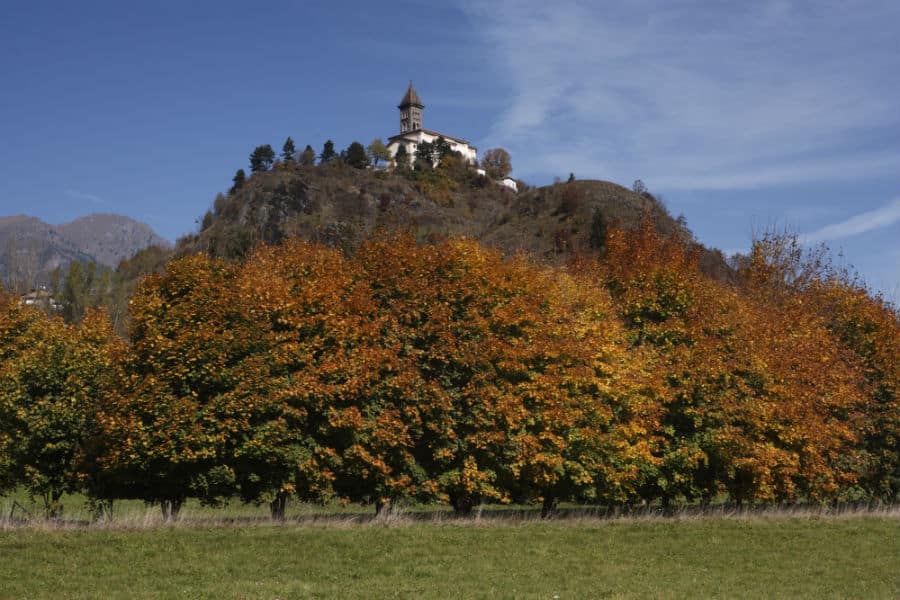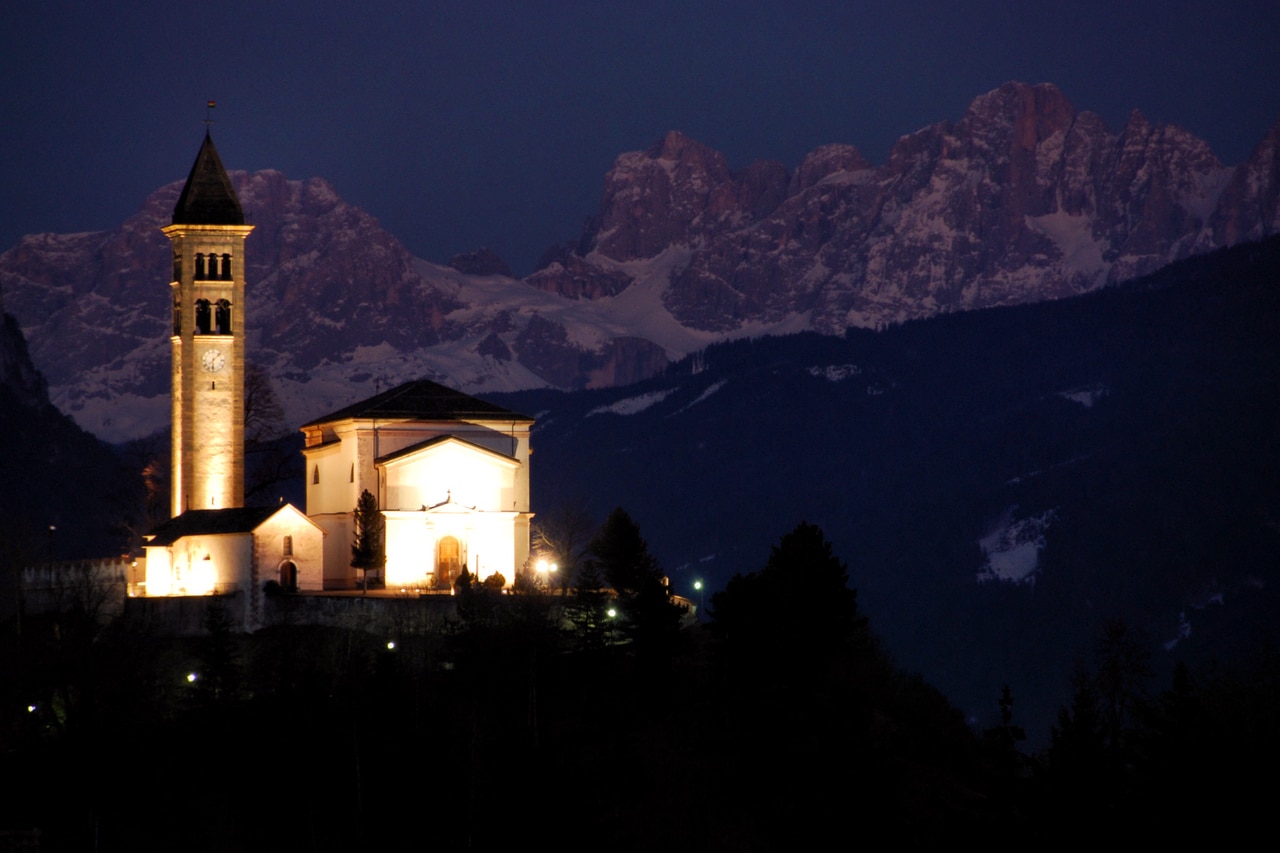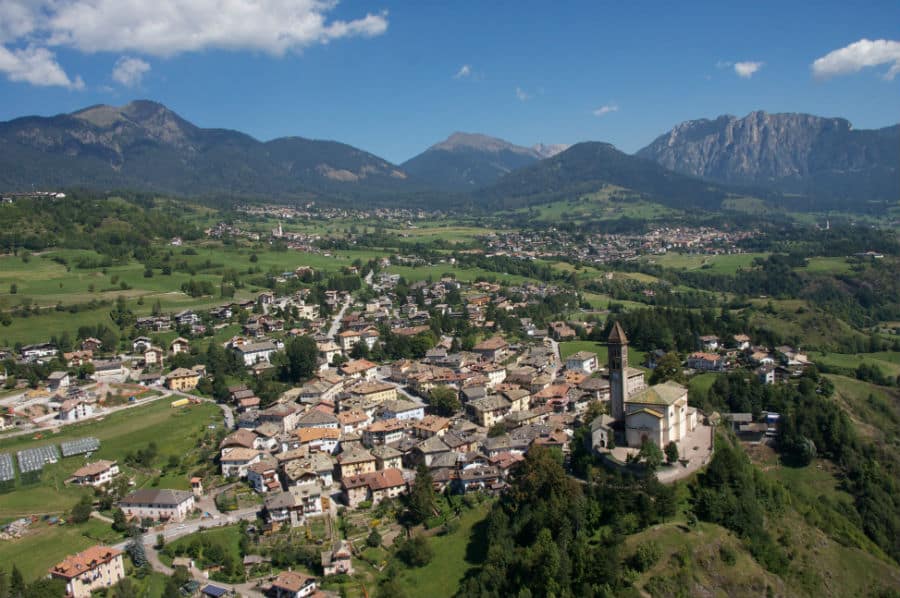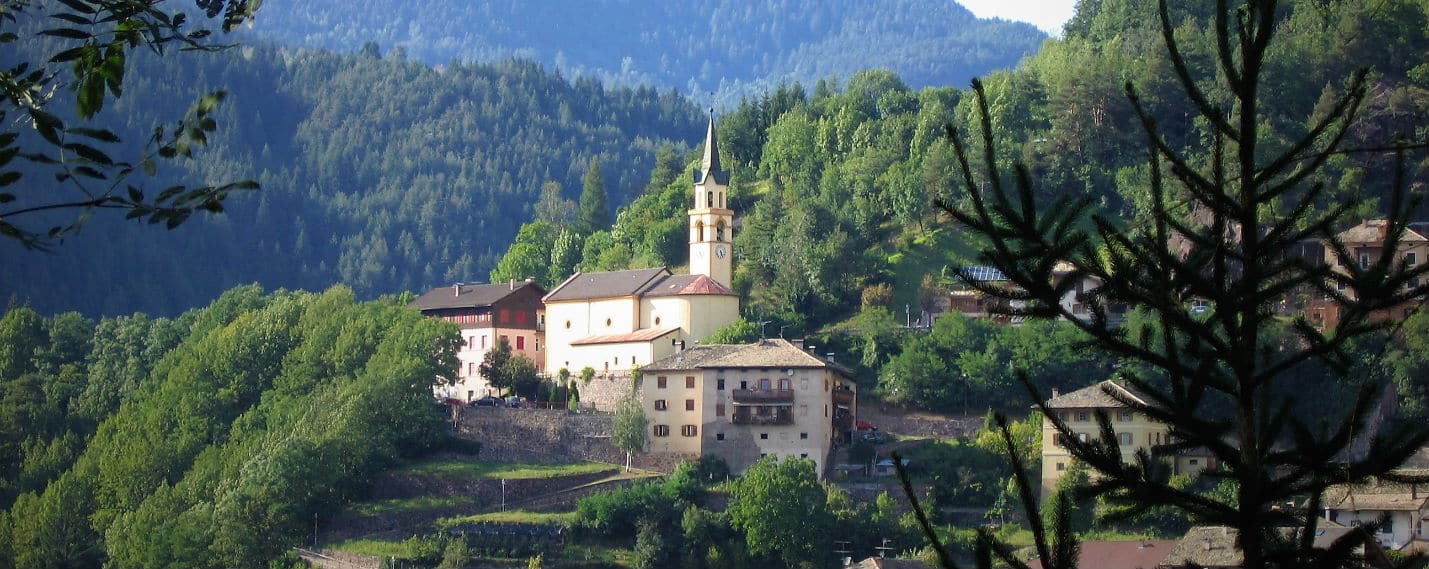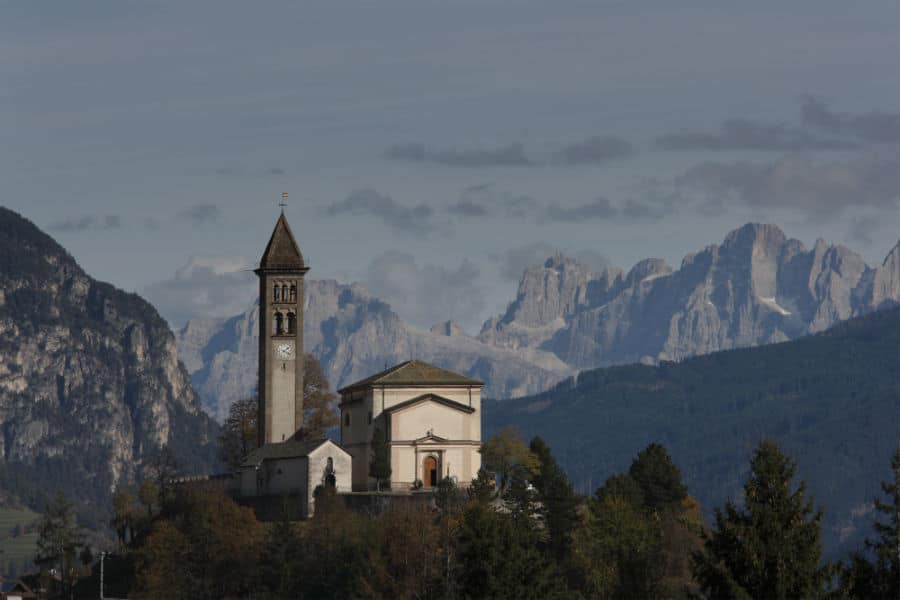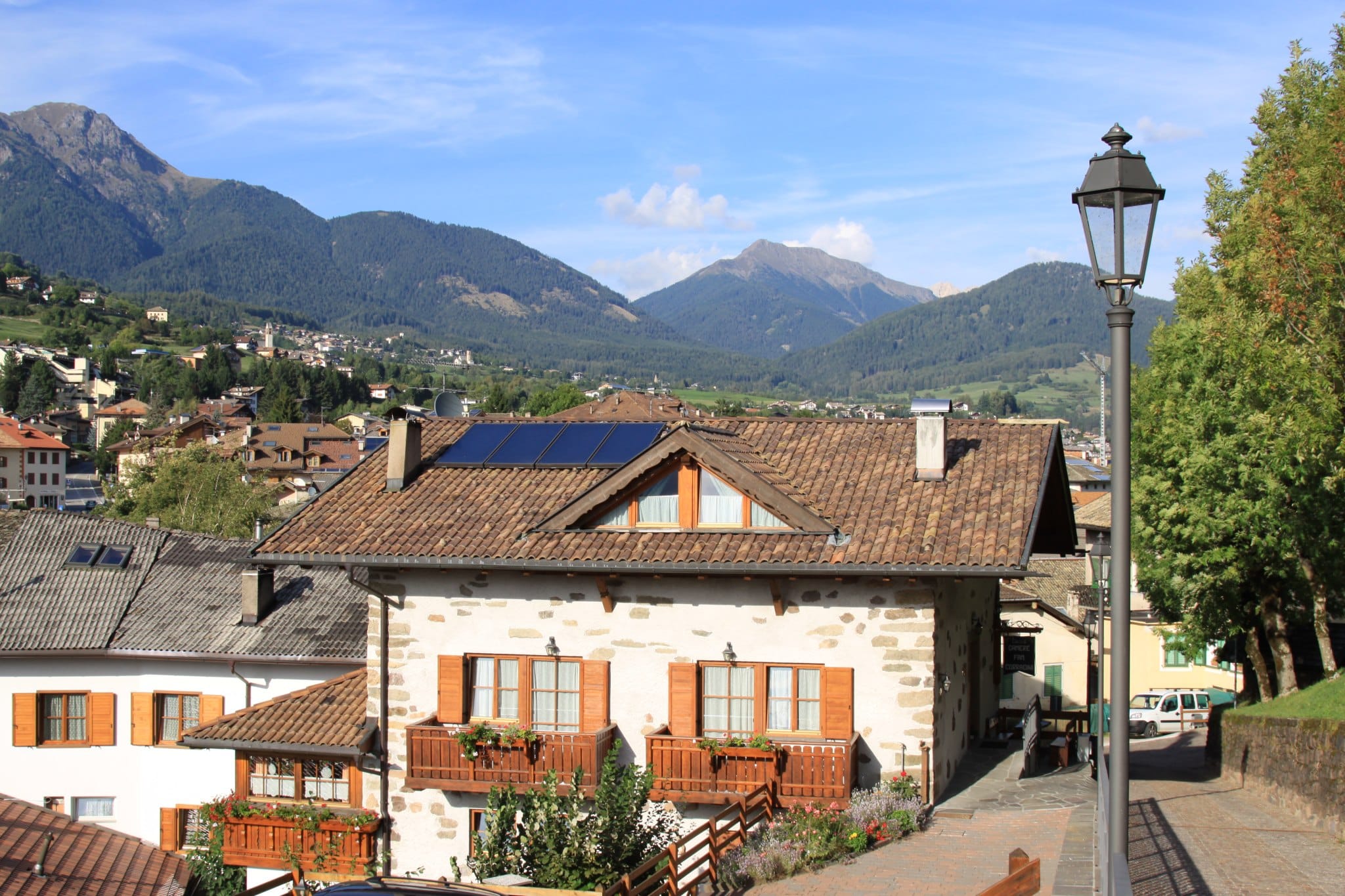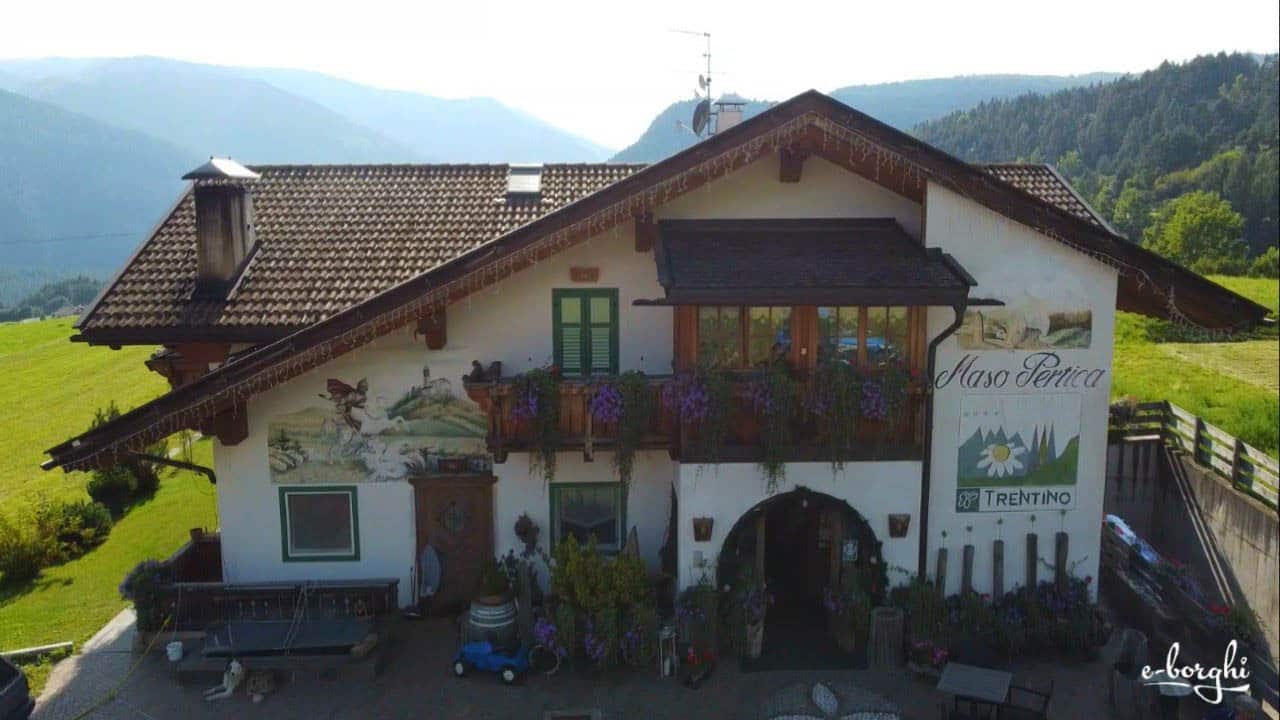Castello di Fiemme is a typical village fiemmese of ancient construction (III sec. d.c.) collected in a wide and sunny grassy basin. The climate is dry and healthy: the zone records the least amount of annual precipitation of the whole valley. The name Castello di Fiemme derives from the ancient manor located on the rocky hill of the inhabited area. In 1296 the castle was sacked and set on fire by the inhabitants of the valley because it was a symbol of oppression. Now there stands the parish church in the nineteenth century of San Giorgio.
In the course of the Middle Ages a Castle is sketched out two entities political-administrative provisions: the "Degania" formed by family groups constituted or influenced by elements of Germanic strain and the "Villa" formed by the family groups autochthonous. The organization of the "Degania" which also included the settlements of Capriana, Valfloriana, Stramentizzo and the "arimanne Houses", scattered here and there in the Valley of Fiemme gradually transformed into "jurisdiction" or "County Castle". Instead the "Villa di Castello" joined the Magnificent Community General di Fiemme to all effects, politicians and civilians.
Now there stands the parish church in the nineteenth century of S. Giorgio. In the castle are to admire four medieval buildings known as "Roman houses". The narrow streets of the village overlook even old houses rustic-noble, massive with wooden stairs external and sacred frescoes. In the surroundings is to visit the Doss Zelòr, seat of a prehistoric, where have been found fittili vessels of the age of bronze and objects of the second Iron Age. Castle, like the other villages in the valley, is a privileged point of access to the trail of the Dolomites.
Molina di Fiemme instead is lying along the Avisio stream at the entrance to Val Cadino. If the historical nucleus of the Castle can boast ancient origins, that Molina is instead relatively recently arisen and ingranditosi around two old mills, said of "Giaco Maros" and "Ziperian", who were on the rio Predaia and in which it is milled the wheat cultivated in Piana di Castello. Starting from the XVIII century the village of Molina grew progressively, thanks to the advent of the industrial society and the consequent strong development that took all sectors handicrafts linked to the machining of wood and of the clay, which flourished at Molina thanks to the abundance of water energy of the Avisio, del rio Cadino and del rio Predaia. In a very short time to Molina rose the settlements of families from all the centers of the Valle di Fiemme and from neighboring valleys, so much so that at the beginning of our century, Molina together with Predaia and Stramentizzo, came to have a number of inhabitants above the seat of the town hall of the Castle.
The buildings of the village are characterized by the fiemmese style. Another peculiarity is given from the roofs covered with tablets scales of ceramics produced in furnaces of the area. The parish church instead rises in the high part of the country. It was built in 1852 and was consecrated to S. Antonio da Padova. Molina offers to the guest the various activities in the nature, in the winter for cross-country skiing, thanks to the track of the Marcialonga, and in summer in the myriad of paths and hiking trails. Molina is also the starting point of the Trail of the Dolomites. His acrobatic park for the tarzaning attracts young people and families. Climbing toward the Val Cadino among the peaks of the Lagorai, you arrive to the famous Passo Manghen (2,047 m.) that connects the valleys of the Avisio to the Valsugana.


